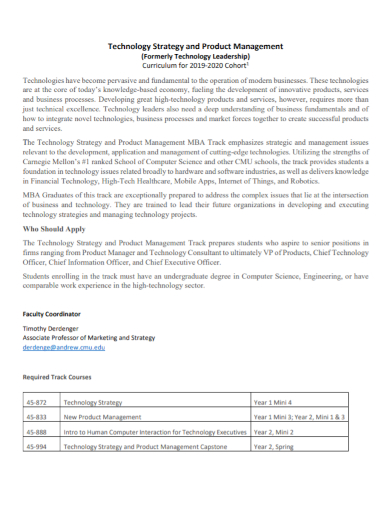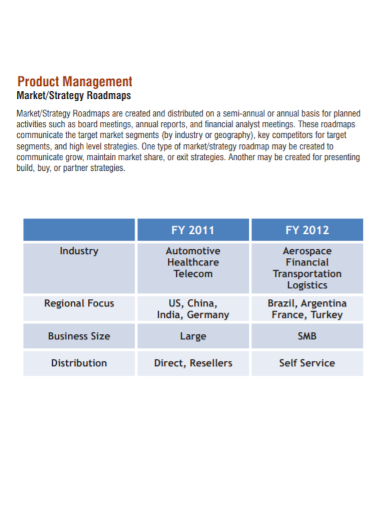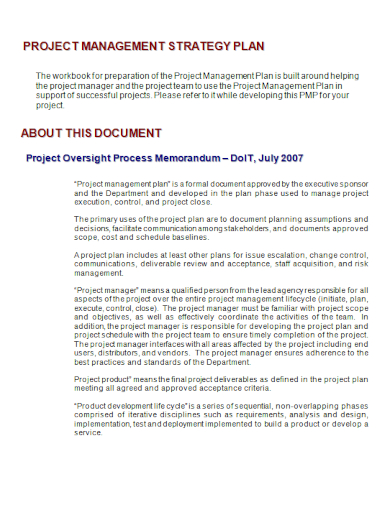Businesses exist because of the products or goods they develop and sell in the market. Most of the things we own are products made and designed by companies. Selling and marketing a product is one part of a company’s business plan, but to be able to formally introduce their products in the market entails a lot of preparation and procedure. To get this going a company must establish a Product Management Strategy. Continue reading more about this in our article and don’t forget to check out our free Product Management Strategy Samples below to get you started.
3+ Product Management Strategy Samples
1. Product Management Technology Strategy
2. Product Management Market Strategy
3. Product Management Development Strategy
4. Product Management Strategy Plan
What Is a Product Management Strategy?
When a product is conceived, it undergoes a product life cycle which starts from development, to brand positioning and pricing, defining the target market or customers and continuous monitoring of the trends that would affect the products. All these plans and steps are formulated in what we called a Product Management Strategy. This should outlines a company’s strategic vision for its product by stating where the products are going, how they will get there and its success rate.
How to Prepare a Product Management Strategy?
Product Management is an interdisciplinary role that reaches across teams to plan, design, and continuously bring better products to market. The whole process involves the following:
I. Idea Development
To come up with a product, a dedicated team from a businesses organization must first come up with a vision. This strategy development starts with idea management when a team discusses a new product. This can be an entirely new product or from previous ideas discussed by the team. Ideas can come from brain storming sessions, crowd sourcing or from customer feedback. If the idea seems like it might be successful, a decision is made to commit resources and proceed to the next phase.
II. Market Analysis
With a product in mind, it’s time to validate if there are potential customers who are willing to buy the product. This is done through market research which comprises comparing similar products that already exist, studying the competition, and identifying target customer groups. Market research involves creating user personas which is describing fictional characters that represent the user types that can have interest in the future product; observing customer behavior and identifying customer’s needs.
III. Development Stage
Make sure that the ideas you have developed and conceived are clearly specified so it will make the transition to development as seamless as possible. Main phases of this stage are product development, internal and external testing, and the application of feedback results.
IV. Sales and Marketing
Now the company is getting ready to launch its products by running trials, finalizing the proposition, and making sure the company is ready to sell the product. With the help of the sales and marketing department, promotions and launch plans have to be finalized, and the sales teams trained to start distribution. In order to gain a successful product launch, business should recognize their pricing strategy, customer awareness and the best time to release the product.
V. Monitoring Products
After the product launching, the product management team must monitor the progress and analyzes data to understand the success of a product. Not only that, there is also the selling process, tracking performance, and fixing any issues. Lastly, gathering data from customer feedbacks, which often is beneficial to any given company since these can present direct insight and suggestions that help you to understand how you are doing at solving the problems you’re already trying to address, and discovering new problems you weren’t aware of. As a result such analysis will show the management team how well the product performs and if any changes are necessary. This could be adding new features, adjusting the sales strategy, or updating the marketing campaign.
FAQs
What Is a Product Manager?
A Product Manager is responsible for identifying customer needs and creates internal and external product vision and leads product development from scratch.
What Is a Product Life Cycle?
A Product Life Cycle is the length of time from when a product is introduced to the consumer market up until it declines or is no longer being sold. It has four stages which is introduction, development, maturity and decline.
What Is a Product Line?
This is a group of related goods or service that a company makes under a single brand and then markets it to customers.
Every year thousands of new products are launched and a significant number of these would more or less fail. For whatever reasons this may be, one of the most significant is that too many products are not thoroughly prepared for the market. A lack of investment in product development could lead to its decline. Which is why a proper product management can possibly evade such consequences and increase the chances of the product succeeding in the market.
Related Posts
FREE 10+ Execution Strategy Samples
FREE 10+ Distribution Strategy Samples
FREE 10+ Product Launch Marketing Plan Samples
FREE 9+ Time Management Strategy Samples
FREE 8+ Sample Product Manager Job Description
FREE 7+ Product Development Roadmap Samples
FREE 7+ Chief Marketing Officer Job Description Samples
FREE 4+ Sample Configuration Management Plan
FREE 11+ Strategic Marketing Plan Templates
FREE 10+ Distribution Channel Strategy Samples
FREE 10+ Communication Action Plan Samples
FREE 9+ Sample Risk Management Implementation Plan
FREE 9+ Sample Product Manager Resume
FREE 9+ Branding Plan Templates
FREE 8+ Sales Plan and Sales Strategy Samples




